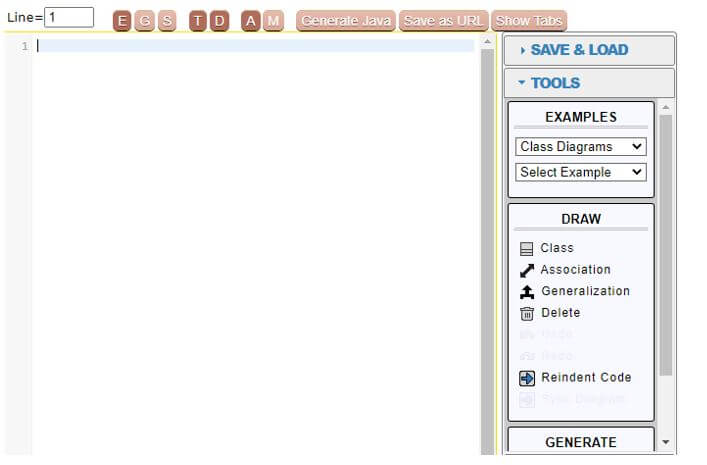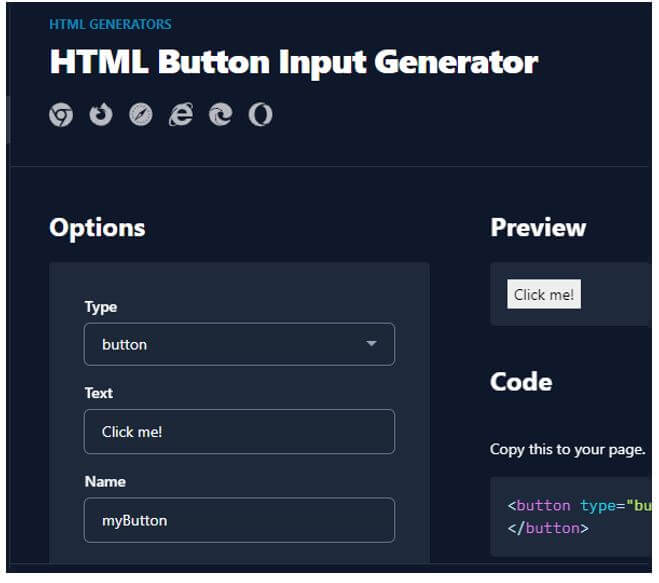
Introduction to Code Generator Tools
The following article provides an outline for Code Generator Tools. A code generator is a programme that understands the meaning of the input and applies the appropriate template to it to produce the intended result. XML, plain text, Python, or Java code can all be used as input for code generation. This input file should therefore be processed by the code generator to determine which templates to utilise. Models are used to generate code, which is built based on user-defined meta-models. The ReadyAPI installation does not include the code creation tools. These tools must be downloaded and installed individually.
This code creation tool will come in handy for those who are frequently stuck writing the same code. The code generator ensures that the design and development processes are in sync. We can construct bespoke code generators using UML, BPMN, or our Domain Specific Language (DSL) to generate files in a wide range of languages, including Java, C, C++, Ada, PHP, HTML/JavaScript, and more. The generators use a template-based method to build source code depending on your technical decisions and development practices, taking into account our modelling principles.
Why Code Generator Tools?
- With this we can save time and space and the code could be reused many times which increases productivity.
- Code generation from an abstract description is how to construct the code. It means that the description, rather than the code, becomes the source of truth for us.
- It allows you to target numerous platforms at once(portability), or to put it another way, the very same abstract description can be used to build various artifacts.
Several elements of programme execution may be covered by code coverage. Incorporating an AI code assistant can enhance code coverage by suggesting comprehensive test cases and identifying untested code paths:
- Branches of your program’s lines of code (if, else, while)
- True/false, etc.) predicates
- Errors in data bounds and randomness
Our program’s entries will have a significant impact on the execution and coverage of our code. And it can be difficult to give exhaustive data as inputs at times.
Different Code Generator Tools
Here is an example of how tools can be used to generate code and data to make the life of a coder easier.
1. Template Engine
The template engine group is the most well-known and widely used. A template engine is essentially a little compiler that can parse a simple template language. A template file contains particular notations that the template engine can understand. The most basic thing it can do is replace the special language with the accurate tools, which is provided at runtime. Few examples like Jinja2 the most widely used tool for python with powerful security features and has special support for HTML pages. The next example is a high-performance Pug.
- Celerio: Celerio is a data-oriented application code generator. Great Celerio takes the entity-relationship model that all relational databases utilise as input, and Celerio isn’t required during runtime. These are ready-to-use code generation templates, which are divided into template packs.
- Acceleo: Acceleo is an open-source code generator that allows developers to create services using a model-driven approach. It includes tools for generating code from EMF-based models, as well as incremental generation, which allows users to write code, amend it, and regenerate it without losing earlier changes.
- COG: This simple generation tool is written in Python language. It reads and writes the same file and therefore no distinction between the source and destination files.
- Zencoder: Zencoder.ai is an AI-powered code generation tool to enhance developer productivity. It leverages advanced machine learning algorithms to generate high-quality, efficient code, helping developers write software faster and with fewer errors. By integrating directly into development environments, Zencoder.ai provides real-time code suggestions, error detection, and debugging assistance, making it an invaluable tool for modern developers looking to optimize their coding workflow.
Sample output file is given here:
Code:
enum val {
/* [[[cog
import cog, handyxml
for a in handyxml.xpath('doc.xml', '//property'):
cog.outl("Property%s," % a.name)
]]] */
docname,
docclass,
doc mark,
doc date,
// [[[end]]]
};2. Design Time Code-Generator Tools
Here we can produce a class with a list of fields and the appropriate methods using a design, but we can’t implement the functionality of a method automatically. It depends on the language and the type of application we use to generate.
- Razor Generator: It doesn’t prefer during run-time and written in Visual Studio. They are built easier to reuse and share.
- Regenerator: This generator tool uses any type of file as input and uses many generators in a single file.
- Code Smith Generator: CodeSmith Tools includes CodeSmith Generator. This is a template-driven based source code generator. It generates code for any language automatically. C#, Java, VB, PHP, ASP.NET, and SQL are all supported by CodeSmith Generator. Schema Explorer is used by CodeSmith Generator to communicate with databases. It gives less error-prone code amazingly.
- Umple: Umple is an example of a tool that uses a systematic approach to merge UML modes with standard programming languages. It was created to make the process of model-driven development, which has traditionally necessitated the use of specialised and complex tools, easier. It’s a programming language that incorporates UML features. Umple is an open-source project that can be applied to real-world industrial systems.
It looks like this:
Sample code of a state machine:
Code:
class Window
{
status {
Open { glass -> Closing; }
Closing {
}
Closed { glass-> Opening; }
Opening {
}
partialOpen {glass -> Opening; }
}
}3. Web Development
- HTML Generator: This defines well-formed HTML elements and helps with front-end projects to create web pages.
Benefits:
- Time saver as they have an automating parser to write a code.
- Across multiple applications, the code created once could be reused.
- Easy to test and Quality.
Conclusion
Therefore, a code generator is a great entry-level step into more complex approaches. Because of this, that it is highly vital to offer simple code creation systems that decrease the entrance barriers for new users. With the correct tool, our code can be swiftly translated into a low-level language with fewer or no bugs. Well, this article shows few glimpses of code generator which was used by most developers to increase the productivity.
Recommended Articles
We hope that this EDUCBA information on “Code Generator Tools” was beneficial to you. You can view EDUCBA’s recommended articles for more information.



